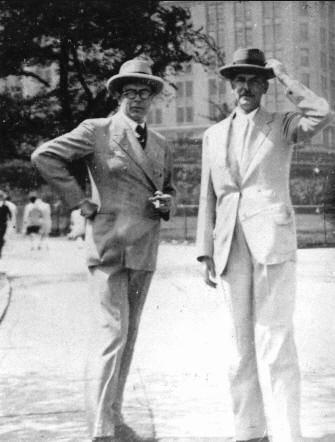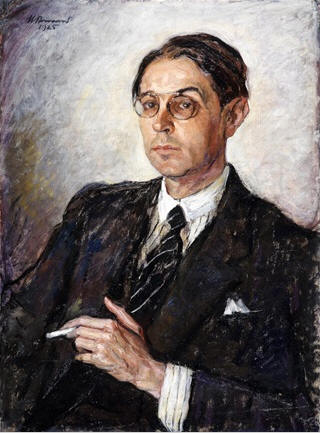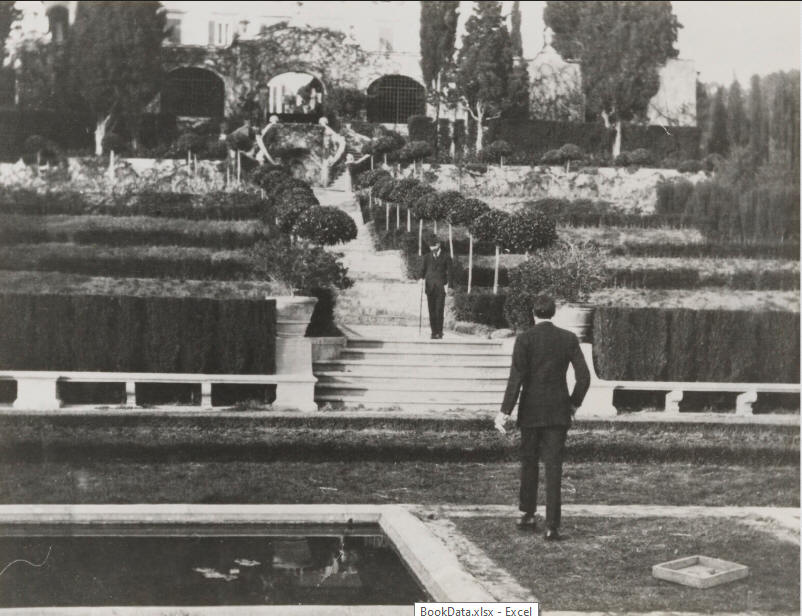

Partner Cecil Ross Pinsent
Queer Places:
Rugby School, Lawrence Sheriff St, Rugby CV22 5EH
University of Oxford, Oxford, Oxfordshire OX1 3PA
Villa I Tatti, Via Vincigliata, 26, 50014 Fiesole FI
La Villa Medicea a Fiesole, Via Frà Giovanni da Fiesole Detto l'Angelico, 2, 50014 Fiesole FI
Fresh Pond Crematory and Columbarium
Middle Village, Queens County, New York, USA
 Geoffrey
Scott (11 June 1884 – 14 August 1929) was an English scholar and poet,
known as a historian of architecture. His biography of
Isabelle de Charrière entitled The Portrait of Zelide won the 1925
James Tait Black Memorial Prize.
Geoffrey
Scott (11 June 1884 – 14 August 1929) was an English scholar and poet,
known as a historian of architecture. His biography of
Isabelle de Charrière entitled The Portrait of Zelide won the 1925
James Tait Black Memorial Prize.
Born in Hampstead, Scott was educated at Highgate School, then Rugby School and New College, Oxford, where he won the Newdigate Prize in 1906. While still an undergraduate he was befriended by Mary Berenson, leading to his admission to the Florence 'circle' of Bernard Berenson. From 1907 to 1909 he was employed by Berenson; he worked on the design of the garden of I Tatti, the Berenson villa, with Cecil Ross Pinsent. This led to work on other gardens. It also brought him the friendship of John Maynard Keynes, who met him there.
In 1914 the publication of The Architecture of Humanism made his reputation. In 1916, he married[1] Lady Sybil Marjorie Cuffe, whose first husband, William Bayard Cutting Jr., died in 1910. Lady Sybil was the youngest daughter of Irish peer and barrister, Hamilton Cuffe, 5th Earl of Desart, who served as the last Lord Lieutenant of Kilkenny, and his wife, Lady Margaret Joan Lascelles, a daughter of Henry Lascelles, 4th Earl of Harewood.[2] She had arrived in Florence when her first husband, terminally ill in tuberculosis, had written he wanted their young daughter, Iris Origo, to grow up in Italy, "free from all this national feeling which makes people so unhappy. Bring her up somewhere where she does not belong."[3] Lady Sybil and her daughter settled in Florence, Italy; buying the Villa Medici in Fiesole, one of the city's most spectacular villas. There she formed a close friendship with Bernard Berenson at the nearby I Tatti.
The Scotts divorced in 1926[4], and she remarried (to Percy Lubbock, another gay man) the same year. With little in the way of career, it has been suggested that an unlikely love affair with Vita Sackville-West from 1923 to 1925 spurred Scott into his later literary production.
At the time of his death, of pneumonia in New York City, Geoffrey Scott had been retained as an editor of the papers of James Boswell.
He was one of Edith Wharton's close friends.

Geoffrey Scott and Cecil Pinsent in Battery Park, New York, August 1929.
[Courtesy of Dr John Scott]

Geoffrey Scott (1885-1929), by Hugo Ritter von Bouvard (1879-1959), 1925

Mary Berenson (née Smith); Geoffrey Scott
by Unknown photographer
matte bromide postcard print, circa 1915
3 1/8 in. x 5 1/8 in. (78 mm x 130 mm) overall
Given by Barbara Strachey (Hultin, later Halpern), 1999
Photographs Collection
NPG Ax161139

Bernard Berenson; Geoffrey Scott
by Unknown photographer
bromide print, 1915
4 3/4 in. x 6 1/8 in. (120 mm x 155 mm) overall
Given by Barbara Strachey (Hultin, later Halpern), 1999
Photographs Collection
NPG Ax160761
My published books: